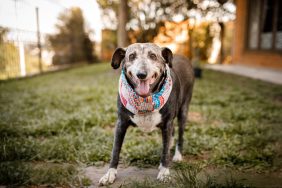Tips For Walking Senior Dogs
-
Prepare For The Weather

(Picture Credit: Mario Arango/Getty Images)
You probably already take precautions when it comes to the weather, no matter how old your dog is, but it becomes even more important when your dog gets older.
Storms and pressure systems can affect the joints, as can extreme cold and heat. Symptoms of medical conditions can get worse in unusually dry or moist air.
Make sure you're prepared for the weather, and take care of your dog's needs. Look at the forecast to get ready. If the weather is cold, dress them in appropriate gear. They may need extra warmth now that they're older. If it's hot, stick to the shade and take more breaks.
If the weather is too much for your senior to handle, consider doing some indoor exercises, instead, and limit the outdoor time. Don't take bad weather as an excuse to skip exercise altogether, though.
-
Shorter, More Frequent Walks

(Picture Credit: TriggerPhoto/Getty Images)
Young dogs might enjoy a nice, long walk to burn off energy, but seniors don't necessarily need to be worn out by physical activity.
The point of exercise for your senior is to get the blood moving, the joints and muscles working, and the brain thinking. Walks should be short enough to avoid putting too much stress on the body.
Going for shorter, more frequent walks instead of long walks will allow your senior to rest and recover, and it will probably help if they have to go potty more frequently in their old age.
The length of the walk may depend on your dog's breed, size, and individual medical needs, so consult your veterinarian to come up with a good walk schedule for your dog.
-
Pay Attention To What Time It Is
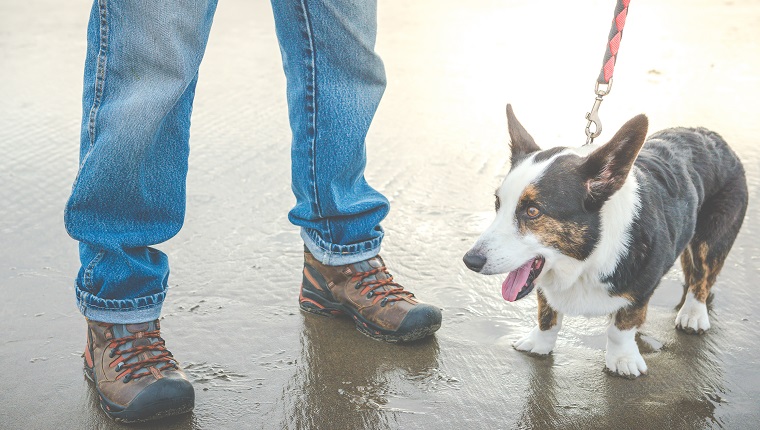
(Picture Credit: Joecho-16/Getty Images)
Maintaining a regular walk schedule is important for aging dogs, as they are less anxious when their routine is more predictable. Try walking your dog at around the same time every day.
You can add more walks as needed, but keeping a schedule can reduce the symptoms of dementia and prevent anxious behaviors.
It's also important to check the time because your senior may find it easier to walk during certain times of day. The temperature is usually warmer during the middle of the day when the sun is high and cooler in the morning or evening when the sun goes down.
Depending on where you live, you may want to time your walks for when temperatures are most appropriate for your dog's needs.
-
Take Breaks & Bring Water
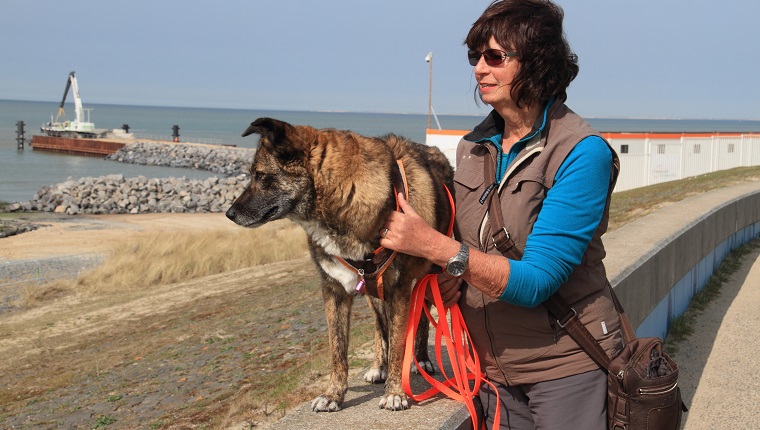
(Picture Credit: Werner Lenske / EyeEm/Getty Images)
Older pups especially need breaks during walks, and you should have some water handy for when they get thirsty.
Many dogs don't know their own limitations, and even in old age, their excitement for going on a walk may cause them to ignore the fact that they need time to relax and recover.
Take some breaks to stop and sniff for a while before continuing, and offer your senior some water, even if they don't show outward signs of being thirsty.
Stopping to sniff can also be a great mental exercise. If your dog has a favorite spot, make it a point to stop there for a moment before you continue.
-
Walk On Easy Surfaces
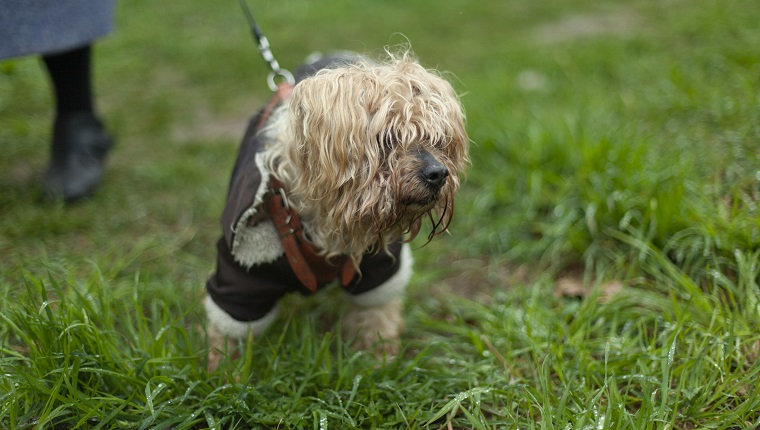
(Picture Credit: Олег Копьёв/Getty Images)
It can be hard to find a good place for dogs to walk that won't put stress on their bodies or create too much of an impact on their joints and bones, especially if you live in the city where there is a lot of concrete and pavement.
It's best to stick to short grass or dirt as much as possible to soften the impact of steps if you can.
Long grass or sand may seem like good choices because they make for softer steps, but it also takes more effort to walk through them, so your senior may get tired quickly.
Sometimes paved surfaces are the only option -- mostly in winter when softer ground is covered in snow or when the ground is too wet and muddy to walk on. If that's the case, you may want to limit outdoor walks and, instead, exercise inside where there's softer flooring.
You can find orthopedic shoes or booties for senior dogs, but check reviews before you decide to use them.
-
Make Sure They Eat Right & Get Medical Attention
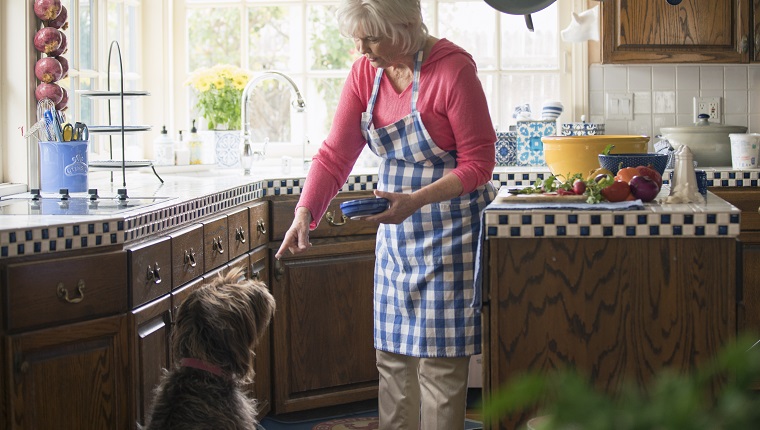
(Picture Credit: Eternity in an Instant/Getty Images)
There are plenty of supplements and foods that can help reduce inflammation and the effects of arthritis on dogs, and there are several dietary changes you can make to combat symptoms of other medical conditions, such as allergies, that can be especially stressful to seniors.
Talk to your veterinarian or nutritionist about creating an appropriate diet for your senior that will help prevent weight gain that can worsen arthritis, and make sure your dog is getting the supplements they need to ward off other conditions that affect older dogs.
Also, talk to your veterinarian about any medications your dog should be taking to address any symptoms that prevent them from exercising. If your dog has trouble moving, see if hydrotherapy or acupuncture might help get them back on their paws.
These steps will make sure that your walks are helpful to your dog, rather than causing more harm than good.
-
Take Special Needs Into Consideration

(Picture Credit: fermate/Getty Images)
Some senior dogs may need assistance when getting around. They may need wheelchairs or other devices to help with mobility, or they may need special boots to prevent injury if they drag their paws.
If your dog has a lot of trouble even walking short distances, it may be worth it to discuss how to keep them moving with your vet. Even if your dog can't walk very far, they may enjoy the fresh air and new smells that come with being outside, which will help keep their brain working and provide mental stimulation.
There's no harm in bringing along a wagon or stroller so your dog can still enjoy the outdoors without the physical stress. Some people may give you funny looks or judge you for walking your dog this way, but don't pay any attention to them. You're doing what's right for your best friend, and that's all that matters.
Let your dog walk for as long as they're able to do so comfortably, but don't deny them the pleasure of being outside if that's something that they enjoy.
-
Listen To Your Dog
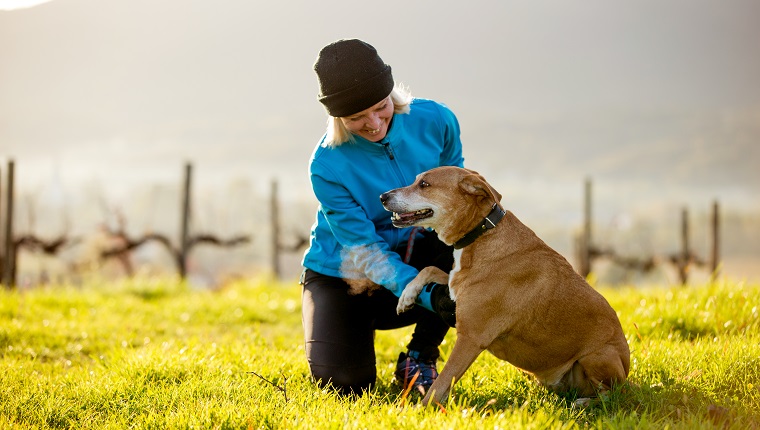
(Picture Credit: CasarsaGuru/Getty Images)
One of the most important things you can do is to listen to what your dog is telling you. Even though they can't actually speak, they can still say a lot with their body language, and you'll have to pay attention.
If they show signs of discomfort, such as limping, slowing down, or refusing to move, it means you need to stop, rest, regroup, and address their needs. If they show signs of needing a break, such as panting, drooling, or whining, you should pull over and offer them some water and a chance to catch their breath.
You may need to take them home right away if they aren't able to continue the walk. Know your dog. If they show signs of stress, it's time to stop.


